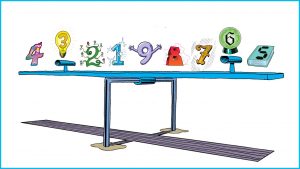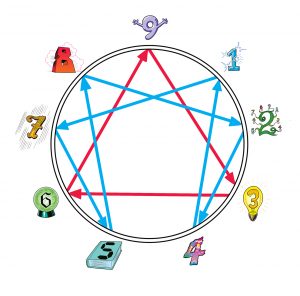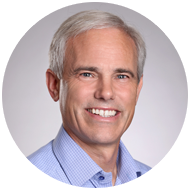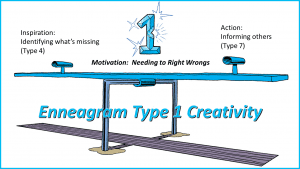
Each Enneagram type brings a distinct creativity to problem solving and teamwork. Here we examine the creativity gift of Enneagram Type 1.
Perfection is no small thing, but it is made up of small things. –Michelangelo
Inspiration—Action
The creative process requires both inspiration and action. Each Enneagram type has a distinct process for accessing these two dynamics. Here I use the Enneagram’s Paths of Integration and Disintegration to understand movement between inspiration and action during the creative process. These paths are inscribed within the circle of the Enneagram, integration in the direction of the arrow, and disintegration opposite the arrow. Type 1 moves to Type 4 in disintegration (stressful) and Type 7 in integration (stress-free).
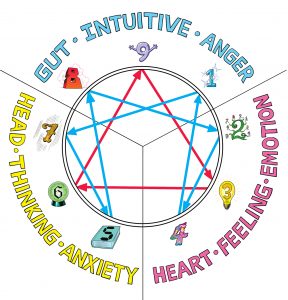
Creativity Seesaw
Creativity is an integral part of problem solving. I devote a chapter to the nine creativity gifts of each Enneagram type in my book on team effectiveness, Teamwork 9.0—Successful Workgroup Problem Solving Using the Enneagram. The seesaw serves as a tool to visualize the back-and-forth motion between inspiration and action for each type. The seesaw is perched on a fulcrum much like each Enneagram dynamic is based on an underlying motivating force. The greater the motivating force, the more acute are the creative inclinations. For Enneagram Type 1, the underlying motivation is the need to right wrongs.
Enneagram Type 1 Motivation: Needing to Right Wrongs
Enneagram Type 1’s intuition informs them when something is not right, not how it should be. When alerted to something wrong, Type 1 can feel stress and movement along the path of disintegration towards the behaviors of Type 4. Type 4s pine for what is missing in the world. Similarly, Type 1 recognizes what isn’t there but should be there. In that state, Type 1 develops a vision for how the world should be to right the perceived wrong. (Type 1s often use the words should and shouldn’t.) Type 1’s inspiration derives from their intuition while in stress.
Having clearly identified the problem and having a vision for the “correct” world, the 1 sets out to inform others around them. A colleague once described this behavior in a Type 1 co-worker as “the town crier.” This behavior can be likened to movement along the Type 1’s path of integration towards the talkative, enthusiastic Type 7. Informing the community in this fashion can spur people to take action that rights the wrong.
Enneagram Type 1 Inspiration: Identify what’s missing
Enneagram Type 1 Action: Inform others, spurring them to action
Of course, the Type 1 will often be self-motivated to take action and right the wrong themselves. Since their particular vision for how to right the wrong may not be shared widely with others, this will cause the Type 1 to swing back into the stressful state compelling them to determine why there is a mismatch. Once they have made that determination, using their new information they will move back to communicating and clarifying. And, so it goes, back-and-forth on the Type 1’s creativity seesaw driving forward to righting a wrong and solving a problem.
Have no fear of perfection, you’ll never reach it. –Salvador Dali
How do the Enneagram Type 1s in your life react to perceived wrongs? Do they see what’s not there like the Type 4? Do they communicate with others like the Type 7? Do they get others involved, or take care of problems themselves?
Want More?
For more details on each Enneagram type’s creative style, see the following series of blogs:
Enneagram Type 2 Creativity – Create with the heart; build with the mind. – Criss Jami
Enneagram Type 4 Creativity – Everything you can imagine is real. – Pablo Picasso
Enneagram Type 6 Creativity – The creative adult is the child who survived. – Ursula Kroeber Le Guin
